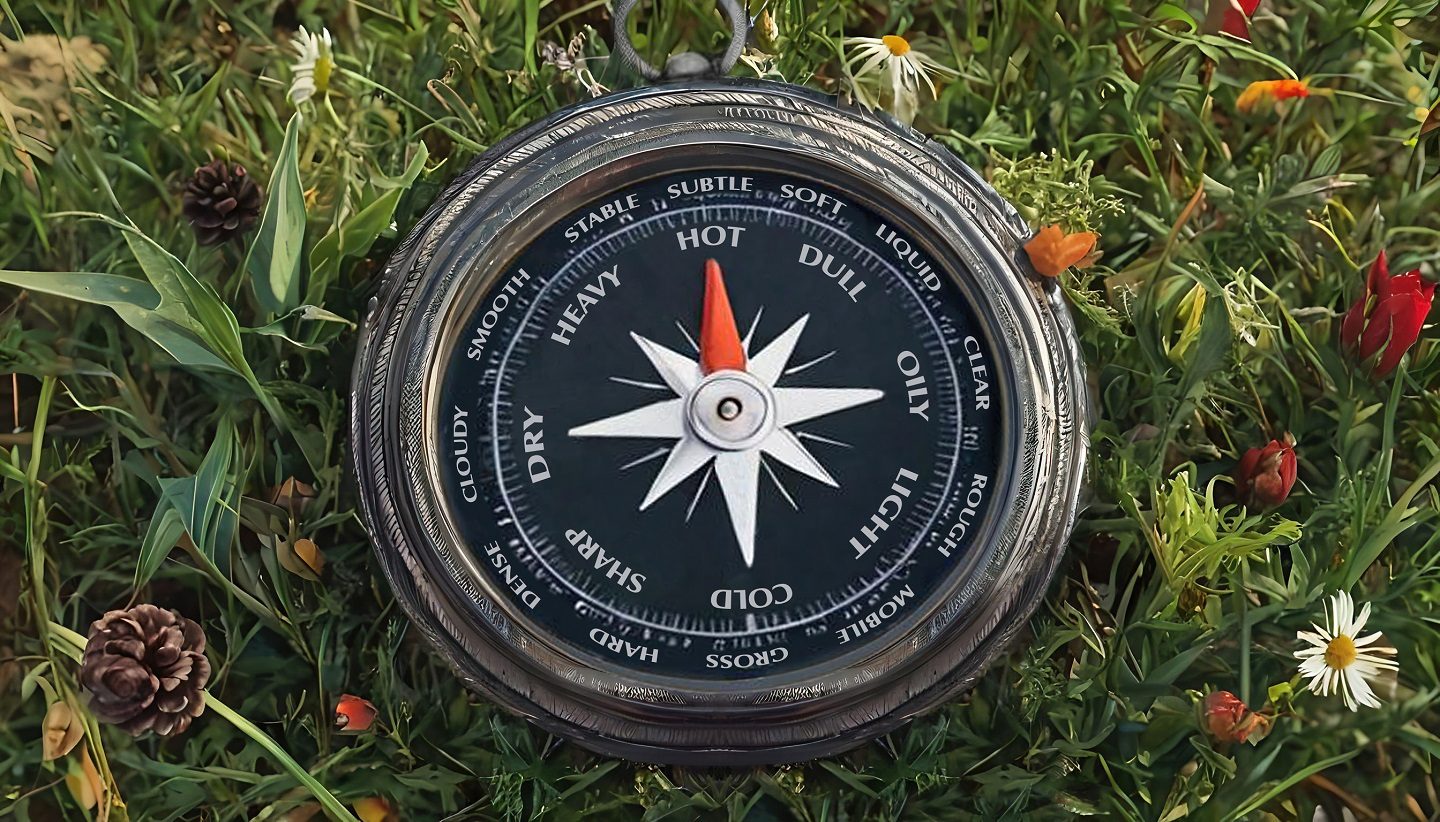I used to go through life like most people, armed with an inherited compass showing two directions: right and wrong. My map had these two poles, marked according to what parents and society had taught me early on. Right was loosely defined as that which insures my survival, social acceptance and well-being, while wrong was simply danger.
This compass covered more than moral choices like telling the truth or respecting other people. It was the only guidance I had, so for any decision, from what to pack for a trip to what to do with my evenings, I used my internal rulebook of what is right or wrong in such situations.
Growing up, I compared my rules with everyone else’s, removing some and adding others. But as I walked through life reaping the results of my actions, I inevitably noticed that despite many revisions, my compass remained unreliable. Doing what was right did not always lead to good health, friendship, success, or a feeling of well. Most times, it seemed that life didn’t care at all about the effort I put into doing everything right. I remember arriving at a lonely emptiness, thinking that maybe it’s all random, maybe what I want and do doesn’t matter at all in how things turn out.
The Turnaround
It was around this time that everything changed. I happened to read my first book on Ayurveda, the ancient Science of Life with roots in the Vedic tradition of India. Back then, the subject was still unknown here in Sweden, and it brought a very different perspective.
This was obviously a vast and complex science, and I approached it as usual, looking for clear-cut right-wrong coordinates to add to my lists. But I soon had to abandon this approach, because Ayurveda turned out to be impossible to tame. It was wild and alive, constantly in motion, answering each craving for answers with a patient “it depends”. It was confusing but also incredibly fascinating, so I persisted.
A Different Worldview
It took a while until I understood the difference. Seen with Ayurvedic eyes, life does not follow the logic so natural to Western minds. You can’t conclude that adding oranges to your diet will boost your health just because eating fruit is on everyone’s list of good things to do. You also can’t deduce that working hard, holding on to your money or encouraging creativity are the right choice in every person’s life. There are no rules applicable to everyone and everything alike.
This is because the Ayurvedic world is not made of people and things, but of something much more abstract, namely qualities of experience. An orange is not a fruit packed with vitamins, having the same effect on everyone, but an experience of moist, heavy, and cooling, which can balance or disturb us depending on our present situation. If we are already experiencing too much of these qualities in our system and life, then oranges will just add to the imbalance.
In the same way, hard work, holding back on resources or spurring creativity can be beneficial for us or not, depending on the context in which these actions are performed.
For example, any intense activity increases the qualities of heat, dryness and hardness, which means that a person, workplace or relationship that is already inflamed and is exposed to intense work will become even less flexible and can heat up all the way to self-destruction.
Similarly, while holding back on resources can very well lead to stagnation, it can also be needed for ungrounded or volatile people, relationships and situations. The reason is that the qualities expressed by holding back are heaviness, stability and density, which balance a too speedy outflow of energy.
As a last example, while maximized creativity is generally considered good for all people and systems in our modern societies, being creative requires the qualities of lightness and clarity. If we encourage and increase these qualities too much, this will also increase the mobility of the person or system, until all stability is lost.
Twenty Qualities
Even if the number of qualities human beings can experience is close to endless, Ayurveda has settled for ten pairs of main qualities or gunas that can help us navigate life in the best way. They are:
COLD – HOT
- cold (sheeta) is expressed as water and air; it can be felt as the coldness of any physical, mental or emotional substance.
- hot (ushna) is expressed as fire; it is involved in any transformation including digestion, absorption and assimilation of physical, mental or emotional material.
HEAVY – LIGHT
- heavy (guru) is expressed as earth and water; it is connected to groundedness, sleep, stability, centeredness, and compact nourishment.
- light (laghu) is expressed as air and space; it is connected to attention, alertness, spaciousness, and easily digested physical, mental or emotional material.
OILY – DRY
- oily (snigdha) is expressed as water; it is the unctuous, smooth quality of moisture and lubrication in both physical material, nourishing thoughts and emotions like compassion and love.
- dry (ruksha) is a quality expressed as air, which when increasing, dries up everything and creates separation, isolation, and independence.
DULL – SHARP
- dull (manda) is expressed as earth and water; it is connected to slowness, relaxation, dullness, calm, quiet, and silence.
- sharp(teeksha) is expressed as fire; it is connected to quickness and intensity, cleansing and expulsion, learning, concentration, and comprehension.
SMOOTH – ROUGH
- smooth (shlakshna) is expressed as water and space; this is a quality experienced through touch and connected to the capacity to heal physical and emotional wounds, to return tissues and feelings to smoothness, flexibility, and caring.
- rough (khara) is expressed as air and earth; it is connected to rigidity, dryness and cracking, as well as depletion and degeneration.
DENSE – LIQUID
- dense (sandra) is expressed as earth; it is connected to stability, compactness, solidity, strength, and the capacity to nourish.
- liquid (drava) is expressed as water; it is connected to the capacity to flow, circulate, moisten, liquefy and dissolve, along with flexibility, compassion and cohesiveness.
SOFT – HARD
- soft (mrudu) is expressed as water and space; it is connected to the capacity to induce softness and laxity, and to delicacy, relaxation, tenderness, and love.
- hard (kathina) is expressed as earth; it is connected to the capacity to harden, and to strength, rigidity, selfishness, and insensitivity.
STABLE – MOBILE
- stable (sthira) is expressed as earth; it is connected to stability, support, immobility, faith and to the capacity to retain and hold back.
- mobile (cala) is expressed as water and air; it is connected to movement, activity, instability, restlessness, insecurity and to the capacity to set in motion, mobilize and expel.
GROSS – SUBTLE
- subtle (sukshma) is expressed as fire, air, and space; it is connected to fineness, intensity, and quickness and to the capacity to dissolve and penetrate.
- gross (sthula) is expressed as earth; it is connected to bulkiness, excessiveness, immobility, and the capacity to obstruct.
CLOUDY – CLEAR
- clear (vishada) is expressed as earth, air, fire, and space; it is connected to clarity, purification, cleansing, isolation, pacification and the capacity to remove blocks, separate and differentiate.
- cloudy (picchila) is expressed as water; it is connected to cohesiveness, attachment, confusion, heaviness and the capacity to unify and integrate.
Effortless Alignment
Do not conclude that Ayurveda involves memorizing these qualities, making a more vehement list of right and wrong, and redoubling the effort to correct behaviors. On the contrary, the qualities of life don’t need to be learned, they just need to be noticed. The true spirit of Ayurveda is effortless alignment with our nature and freedom from judgment, because seen through this lens, nothing in the world is wrong. It just needs to be in the right place at the right time, balancing its opposite.
Becoming a Master of the Science of Life is not difficult at all. What made me fall in love with Ayurveda was the simplicity. Instead of walking through life guided by my exhausted mental compass, I can just sense, and immediately–I know.
I can notice how I feel right now, and how the object, direction or action before me feels. If it is a good fit, if the qualities of the new experience balance the qualities I have at the moment, then I happily step into the blend. If not, then it is easy to avoid creating imbalance, without any judgment needed.
An intense discussion is precisely what I need sometimes, and truly not at others. Being generous releases me of stagnation, or adds to my instability. Bouts of creativity are a step forward that I need to encourage sometimes, or a sign of exhaustion because I’m walking in circles. And oranges are great when I need them, but not when my life already has too much of their qualities. It always depends.
Discovering that I can live intelligently by simply sensing my way through life has removed the belief that the mind is our best guide. The human mind has its own role of course, but it is our sensing capacity that informs us best, allowing us the freedom to move with the natural ease of children or migrating birds.
We don’t need to learn to live in harmony with everything. All we need is to remember how.
 Aurora Carlson is an Ayurvedic counselor, meditation teacher, social worker, linguist, and the Chopra Foundation regional advisor for Sweden. Visit her on: auroracarlson.com.
Aurora Carlson is an Ayurvedic counselor, meditation teacher, social worker, linguist, and the Chopra Foundation regional advisor for Sweden. Visit her on: auroracarlson.com.






